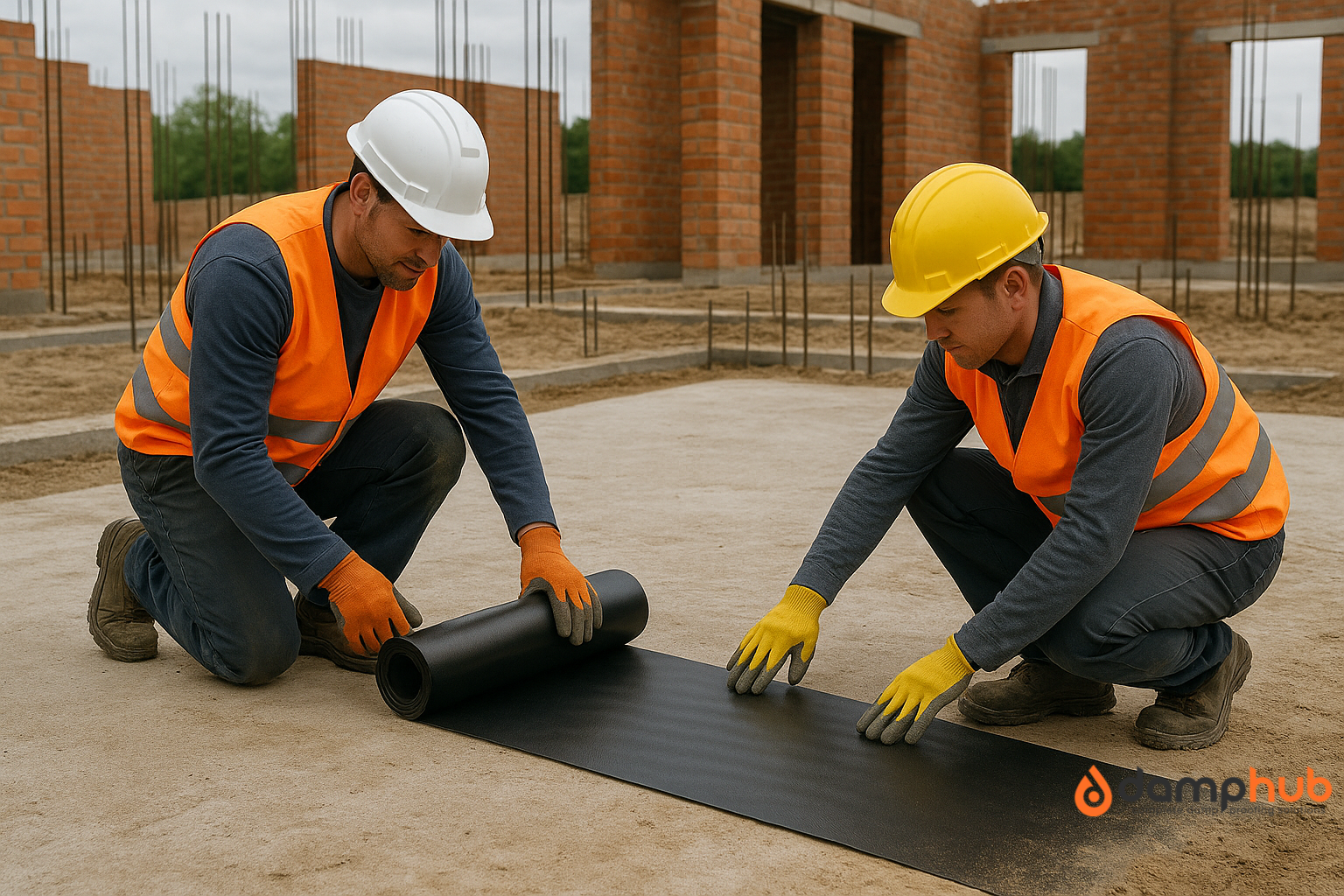
You know the smell. That heavy, musty air that hits the back of your throat the second you walk into a damp house. It clings to clothes, lingers on furniture, and makes you want to throw open every window. The real question, though, isn’t just about the smell or ugly black mould spots creeping up the walls. It’s this: Can a damp house make you sick?
Yes. And not just in a vague, maybe sort of way. Damp can mess with your breathing, your skin, and even your mood. Some people barely notice it, while others are constantly ill and don’t put two and two together until years later.
Useful resource for more guides: Damp in House Who to Call? A Full UK Homeowner’s Guide
Is It Unhealthy To Live In A Damp House?
If you’ve been staring at peeling wallpaper or that never-drying patch near the skirting board and wondering, “Can a damp house make you sick?” You’re asking the right question. Damp doesn’t stay stuck to the wall. It spreads into the air. Tiny mould spores float around, and dust mites thrive. Every breath you take in that space carries those particles into your lungs.
How does damp affect people? That depends. A strong, healthy adult might just get the odd cough or stuffy nose. But kids, elderly people, or anyone with asthma or allergies can really struggle. Some end up wheezing at night. Others develop rashes. For people with weak immune systems, it can develop into something far more serious.
Living with damp is like living with an unseen irritant that won’t leave you alone.
What Illnesses Can You Get From Living In A Damp House?
Doctors have linked damp homes to a whole list of health issues. Some are mild, others sound pretty scary:
- Regular chest infections
- Worsening asthma attacks
- Sinus problems and long-term congestion
- Skin irritation or eczema flare-ups
- Even fungal infections in the lungs if mould exposure is heavy

Good to Know
Studies show children who grow up in damp, mouldy homes are more likely to develop asthma later in life. That’s not a small detail—that’s something that can affect them for years.
What Are The Symptoms Of Damp Sickness?
“Damp sickness” isn’t an official medical term, but it’s how people describe the way they feel when they live in damp conditions. The signs aren’t the same for everyone, but here’s what often pops up:
- Constant cough that won’t shift
- Stuffy or runny nose all year round
- Wheezing or shortness of breath indoors
- Skin rashes that reappear without a clear reason
- Feeling drained for no good explanation
If your symptoms seem to vanish when you leave the house for a few days, then return the second you’re back, that’s a big clue.
How Do I Know If Damp Is Making Me Ill?
It’s rarely obvious at first. You might think you’ve just got a lingering cold, or maybe blame the season. But here’s a simple check: do you feel better away from home? Maybe a weekend trip or even a day at work leaves you clearer and more energised, but the fatigue, cough, or tight chest hits again once you’re back in your living room. That pattern is the giveaway.
Try This
Keep a notebook for a week. Write down how you feel morning and evening. Track if symptoms get worse at home. You’ll quickly spot whether damp might be behind it.
Who Are At Increased Risk Of Damp and Mould Sickness?
Damp hits everyone differently, but some people are hit much harder:
- Babies and children whose lungs are still developing
- Elderly people with weaker immune systems
- Asthma or allergy sufferers
- People recovering from illness or with long-term conditions
For these groups, damp isn’t just uncomfortable—it can be genuinely dangerous.
Can You Permanently Get Rid Of Damp?
Yes, but only if you stop the actual cause. You can wipe down mould patches every weekend, but that’s just treating the surface. Unless the leak, rising damp, or condensation problem is sorted, it always comes back. Permanent fixes usually mean better ventilation, repairing cracks, installing a damp proof course, or sometimes full-on professional treatment.
Pro Tip
Don’t rely on quick fixes like spraying bleach or painting over mould. It always looks better for a bit, then creeps back stronger. Always tackle the source of the moisture first.
Is Damp Expensive To Fix?
Here’s the one most homeowners dread. How much does damp proofing cost? The answer is: it depends. If it’s just condensation, a decent dehumidifier and some ventilation changes might only cost a few hundred pounds. Rising damp or structural repairs, though, can run into the thousands.
It sounds painful, but leaving it almost always costs more. Damp spreads. Plaster crumbles. Timber rots. You could end up paying double or triple later if you ignore it now.
How Long Does Damp Take To Fix?
Small fixes, like better airflow, can make a difference in days. Larger problems take weeks. Professional damp proofing or tanking basements might stretch into months, depending on the work needed. The key is starting early. The sooner you take action, the less time you’ll spend living in unhealthy conditions.
Related article: How Long Does a Damp Survey Take? A Step-by-Step Timeline
Can a Damp House Make You Sick? Common Questions Answered

Can sleeping in a damp room cause headaches?
Yes. Breathing in stale, mould-filled air can leave you waking up with headaches or feeling foggy.
Does damp affect mental health?
It does. Living with damp can make you anxious, stressed, and disrupt your sleep. The constant musty damp smell and health worries add to it.
Can a damp room cause breathing problems?
Definitely. Damp air irritates the lungs and makes breathing harder, especially for asthmatics.
Can a damp house cause pneumonia?
Not directly for everyone, but for vulnerable people, dampness weakens the lungs and increases the chance of pneumonia.
Can you fix damp yourself?
Sometimes. Condensation issues, yes. Structural damp? Not really. That usually needs specialists.
Can damp go away on its own?
No. It never disappears without intervention. Moisture will always keep feeding it.
Can damp cause heart problems?
Indirectly, yes. Long-term breathing strain can put added stress on the heart, especially for those with existing conditions.
Conclusion
So, back to the first question: can a damp house make you sick? Without doubt. It’s not just an ugly patch on the wall—it’s a health issue. And one that’s far easier to sort now than years down the line when your health and your house have both taken the hit.






